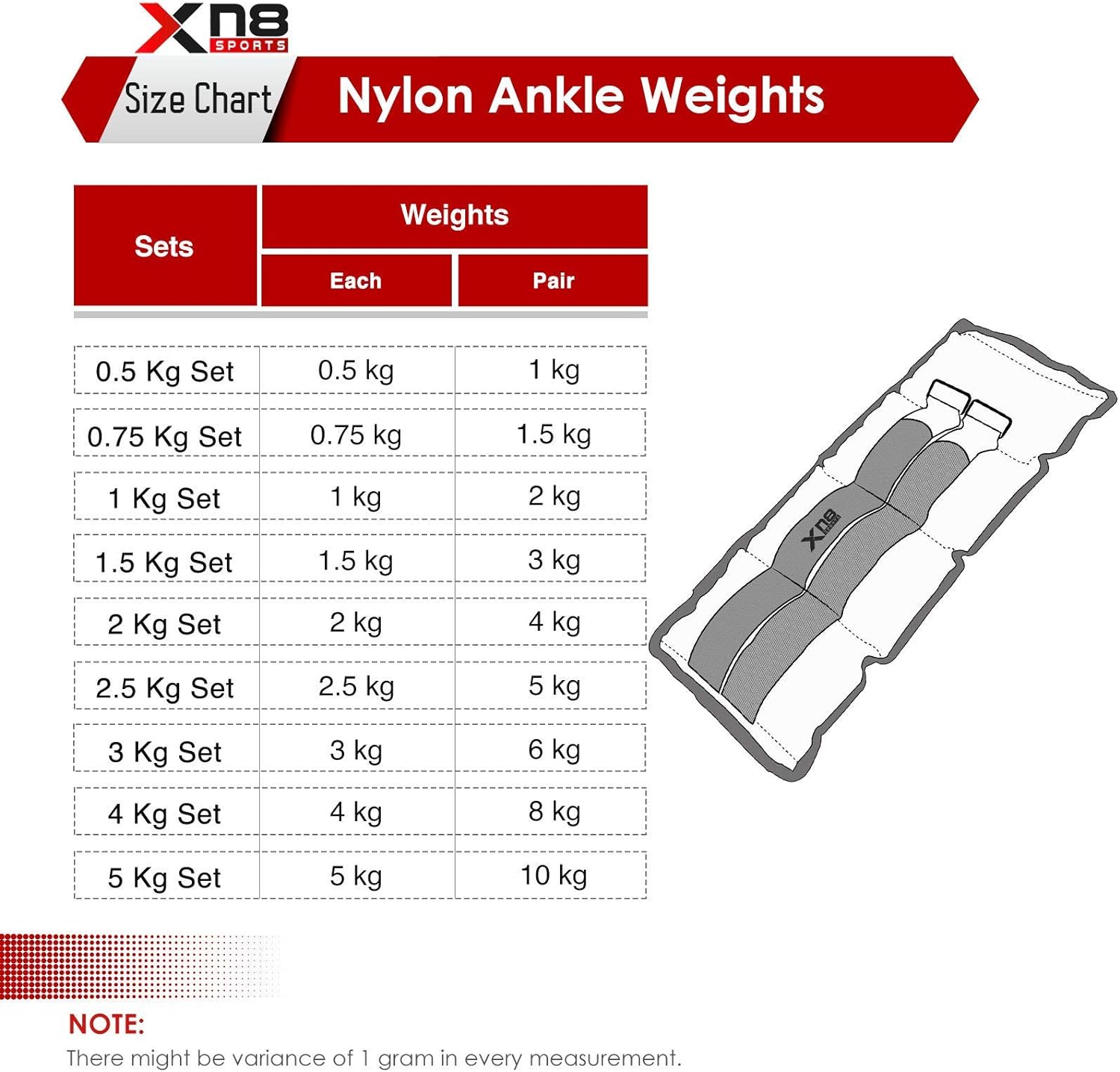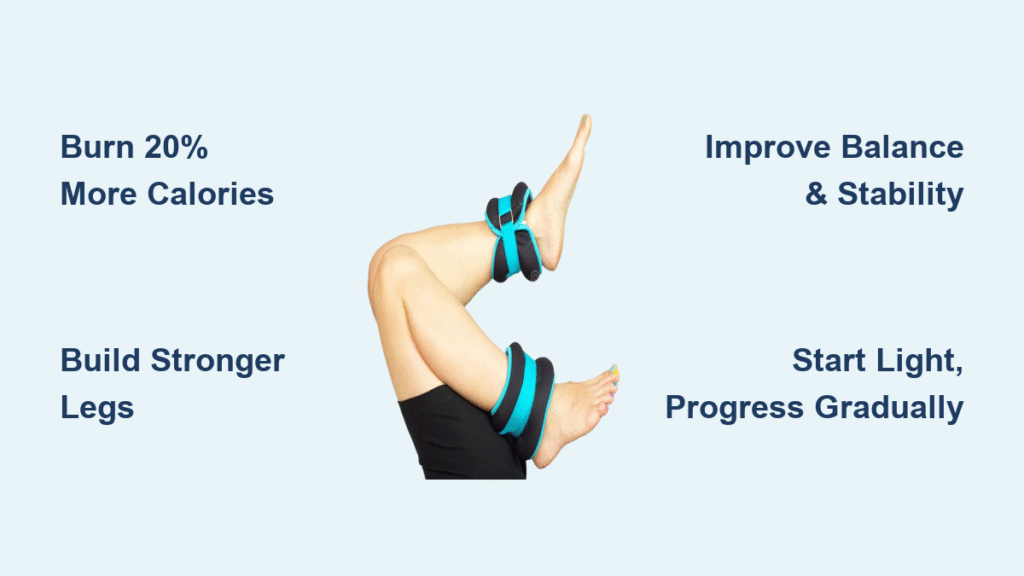You’re walking the same neighborhood route you’ve taken for years, but today feels different. Your legs work harder with each step, your heart pumps faster, and by the end, you’re pleasantly surprised by the extra burn. This simple addition—ankle weights strapped around your ankles—can transform an ordinary walk into a powerful fitness tool. Whether you’re looking to burn more calories, strengthen your legs, or improve your balance, ankle weights offer science-backed benefits that go far beyond basic walking.
Decades of research confirm that these small sandbags can enhance everything from calorie burning to balance improvement. But the key lies in using them correctly. This guide breaks down exactly how ankle weights work, what benefits you can expect, and how to incorporate them safely into your walking routine for maximum results—all without stepping foot in a gym.
Burn 20% More Calories During Your Daily Walk

Ankle weights fundamentally change how your body responds to walking by adding resistance that forces your muscles to work significantly harder. Every step becomes a mini strength-training movement, combining cardio with resistance exercise.
Why Your Metabolism Skyrockets with Added Weight
When you add 1-2% of your body weight to your ankles, your leg muscles must generate more force to lift and move your legs forward. This increased muscular demand elevates your heart rate by 5-10 beats per minute and raises oxygen consumption, directly translating to more calories burned per minute of walking.
You’ll experience these metabolic advantages:
– 15-20% increase in calorie expenditure during walks
– Extended elevated metabolism for 2-3 hours after your walk
– Enhanced fat oxidation compared to regular walking
– Improved insulin sensitivity from the combined cardio-strength stimulus
Visible Body Composition Changes in Just 6 Months
The 2016 Malaysian study provides compelling evidence for body composition improvements. Participants wearing 1.1-pound ankle weights for just 20 minutes, three times weekly, achieved remarkable results without changing their diet:
- Waist circumference: Average reduction of 2-3 inches
- Body fat percentage: 3-4% decrease in overall body fat
- Waist-to-hip ratio: Significant improvement indicating reduced abdominal fat
- Cardiovascular risk markers: Measurable improvements across multiple indicators
These changes occurred without dietary modifications, highlighting the powerful impact of consistent, weighted walking.
Build Stronger Legs Without Stepping in a Gym

Walking with ankle weights creates a unique strength-training environment where your body weight provides the resistance, eliminating the need for complicated routines or expensive equipment.
Target Every Leg Muscle with Each Step
Each stride with ankle weights activates multiple muscle groups simultaneously:
Primary muscles engaged:
– Quadriceps: Work harder during knee extension in push-off
– Hamstrings: Increased activation during leg swing phase
– Gluteus medius: Stabilizes pelvis against added lateral forces
– Tibialis anterior: Controls foot dorsiflexion against resistance
– Calf muscles: Generate more force during toe-off
Progressive Strength Timeline You Can Actually See
The beauty of ankle weights lies in their scalability. Starting with just 0.5% of your body weight (typically 0.5-1 pound per ankle) provides noticeable resistance without overwhelming your joints. As strength improves, you can gradually increase to 1-2% of body weight:
- Week 1-2: Neurological adaptations, improved muscle recruitment
- Week 3-6: Visible muscle tone changes, increased endurance
- Month 2-3: Measurable strength improvements in daily activities
- Month 4+: Sustained strength maintenance with continued use
Transform Your Balance and Joint Stability in 4 Weeks
Beyond strength and calorie burn, ankle weights offer profound benefits for balance and joint stability, particularly valuable for older adults or those recovering from injury.
Knee Joint Repositioning Accuracy Improves 25%
The 2016 study on knee joint repositioning revealed that ankle weights significantly improve proprioception—the body’s ability to sense joint position. Participants using 1% of their body weight showed:
– 25% improvement in knee joint positioning accuracy
– Enhanced neuromuscular control during walking
– Reduced risk of missteps and falls
– Better overall walking mechanics
Dramatic Stroke Rehabilitation Improvements
Clinical research demonstrates remarkable balance improvements for stroke patients using ankle weights. Adding 3-5% of body weight to the affected leg significantly enhanced balance capabilities, allowing patients to:
– Stand longer without support
– Walk with improved gait patterns
– Reduce fall risk during daily activities
– Build confidence in mobility
Choose the Perfect Weight for Your Body and Goals

Choosing the right weight determines both effectiveness and safety. Too light provides minimal benefit; too heavy risks injury.
Calculate Your Ideal Weight in 30 Seconds
For general fitness walking:
– Start: 0.5% of body weight (divide between both ankles)
– Progress: Work up to 1-2% of body weight maximum
– Example: 150-pound person starts with 0.75 pounds total (0.375 per ankle)
For therapeutic applications:
– Joint repositioning: 1% total body weight
– Balance training: 3-5% on affected side only
– Gait improvement: 0.5-1% gradual progression
When to Use Light, Moderate, or Heavy Weights
- Light (0.5-1 pound per ankle): Ideal for beginners, joint issues, or extended walks
- Moderate (1-2 pounds per ankle): Effective for fitness improvements in healthy adults
- Heavy (2-3 pounds per ankle): Advanced users only, short durations, high injury risk
Limit Sessions to 20 Minutes for Maximum Safety and Results
The key to ankle weight benefits lies in strategic usage rather than constant wear. Research supports specific timing protocols that maximize benefits while minimizing risks.
Your Science-Backed Walking Schedule
For fitness enhancement:
– Duration: 10-20 minutes maximum per session
– Frequency: 2-3 times per week
– Rest days: Essential for muscle recovery and joint health
– Progression: Start with 10 minutes, add 2-3 minutes weekly
For therapeutic purposes:
– Duration: 15-30 minutes under professional guidance
– Frequency: Daily or as prescribed by healthcare provider
– Monitoring: Track pain levels, fatigue, and joint response
Stop These 3 Ankle Weight Mistakes Before They Cause Injury
Even small errors in ankle weight usage can lead to injury or diminished results. Understanding these pitfalls protects your joints while maximizing benefits.
Overuse Errors That Damage Joints
Wearing ankle weights all day creates muscular imbalances and stresses joints without recovery time. This common mistake leads to hip flexor tightness and lower back pain. Solution: Limit to specific walking sessions only—never wear during daily activities.
Starting Too Heavy: The Fast Track to Injury
Immediate joint pain or muscle strain often results from starting with weights that are too heavy. This alters walking mechanics and increases injury risk, especially in knees and hips. Solution: Always start lighter than you think necessary and progress gradually.
Poor Attachment Technique That Wrecks Your Gait
Common attachment errors include weights that are too loose (causing uneven resistance), too tight (restricting circulation), or positioned below the ankle bone (affecting gait mechanics). Solution: Secure firmly above ankle bone and check fit after 5 minutes of walking.
Integrate Ankle Weights Into Your Current Routine Without Overtraining
Successfully adding ankle weights requires strategic integration with your current fitness program rather than random use.
Your 4-Week Progression Framework
Week 1-2: 0.5% body weight, 10 minutes, 2x weekly
Week 3-4: 0.75% body weight, 12-15 minutes, 2-3x weekly
Month 2: 1% body weight, 15-20 minutes, 3x weekly
Month 3+: 1-1.5% body weight, 20 minutes maximum, 3x weekly
Smart Combination Strategies
- Use ankle weights on active recovery days
- Avoid using them on heavy leg training days
- Alternate weighted and unweighted walking days
- Maintain longer unweighted walks for endurance
Track These 4 Metrics to Measure Your Ankle Weight Progress
Tracking specific metrics ensures you’re achieving desired benefits while avoiding overtraining.
Physical measurements to track weekly:
– Waist circumference (measure at navel level)
– Walking pace with vs. without weights
– Rate of perceived exertion during walks
– Joint comfort during and after walks
Increase weight when:
– 20-minute sessions feel easy
– Heart rate response decreases
– No muscle soreness following sessions
– Walking mechanics remain smooth
Decrease weight or rest when:
– Joint pain during or after walks
– Altered gait patterns or compensations
– Excessive muscle soreness lasting >48 hours
– Fatigue impacting daily activities
Prevent Joint Damage With These Safety Protocols
While ankle weights offer significant benefits, understanding and preventing potential risks ensures long-term success.
Who Should Avoid Ankle Weights Altogether
High-risk individuals include those with:
– Previous knee, hip, or ankle injuries
– Arthritis in lower body joints
– Balance disorders or vertigo
– Recent lower body surgery
For healthy adults:
– Always warm up 5 minutes without weights first
– Focus on proper walking form throughout
– Stop immediately if sharp pain occurs
– Ice joints after intense sessions
Ankle weights transform walking from simple cardio into a comprehensive fitness tool. The research is clear: when used correctly, these small additions can burn more calories, build stronger legs, and improve balance—all while doing an activity you already enjoy. Start light, progress gradually, and listen to your body. The key is consistency over intensity, using ankle weights as a strategic supplement rather than a daily requirement. Begin with just 10 minutes twice weekly, and you’ll soon discover why this deceptively simple tool has remained popular for over 30 years.





